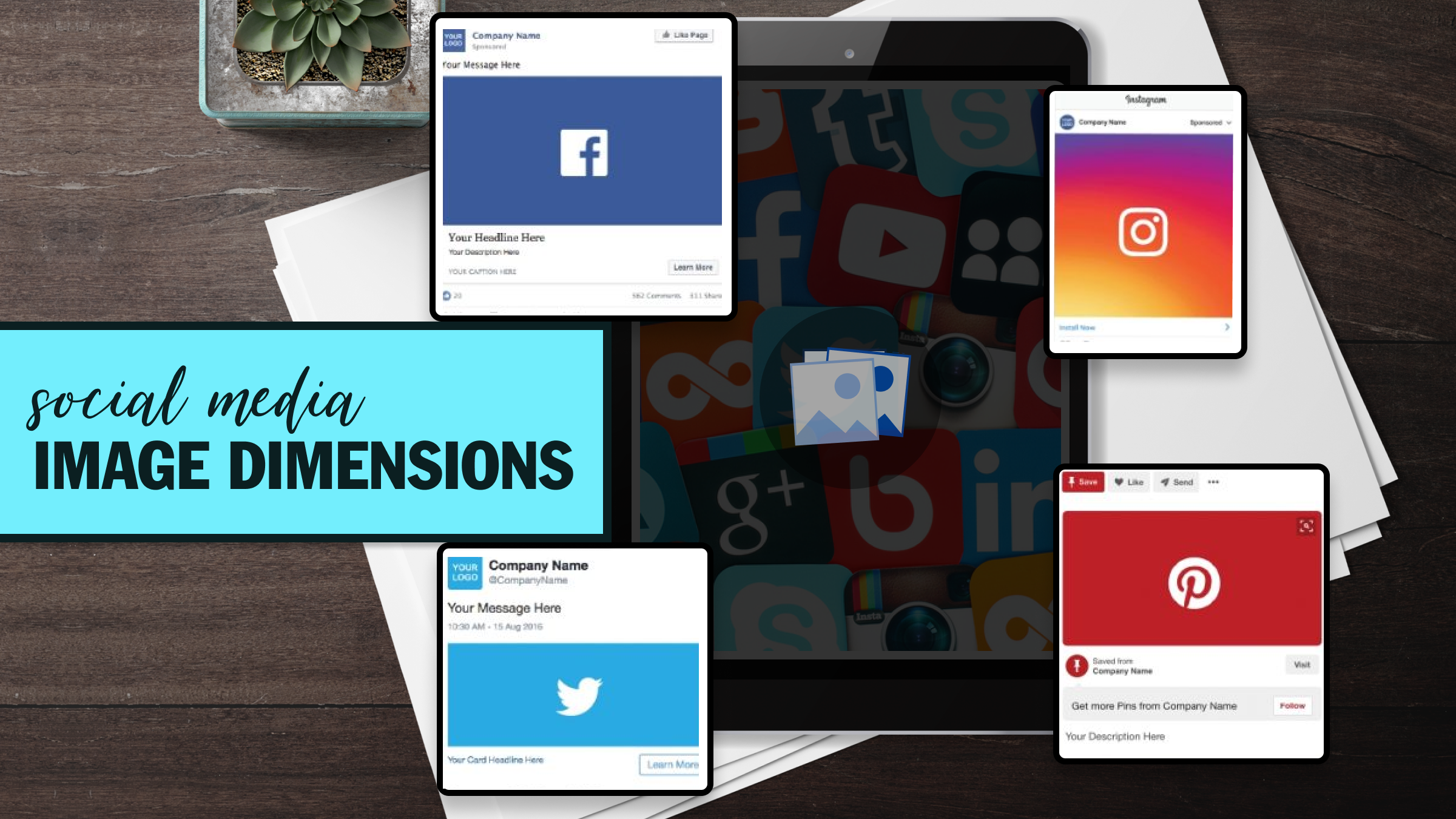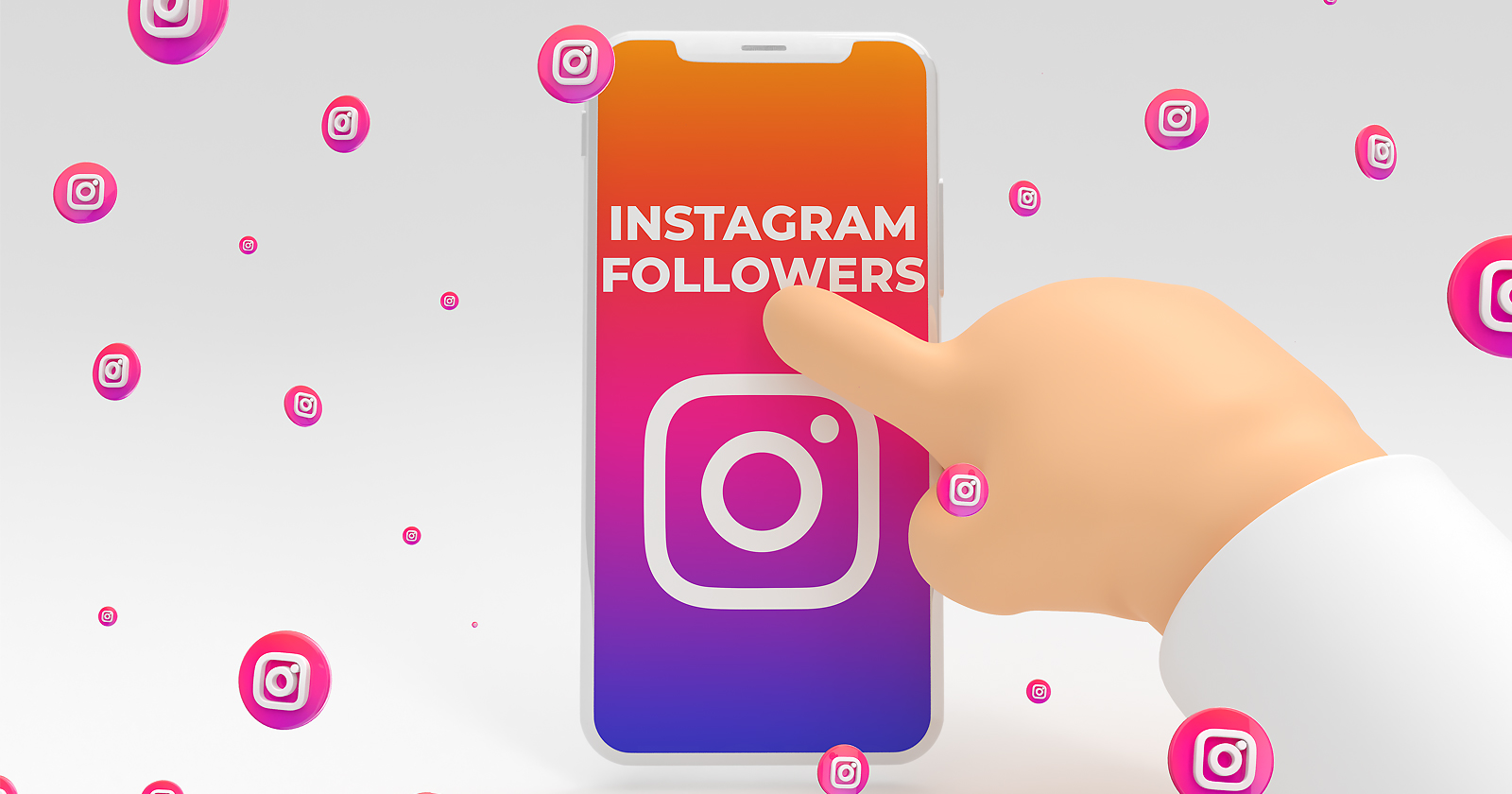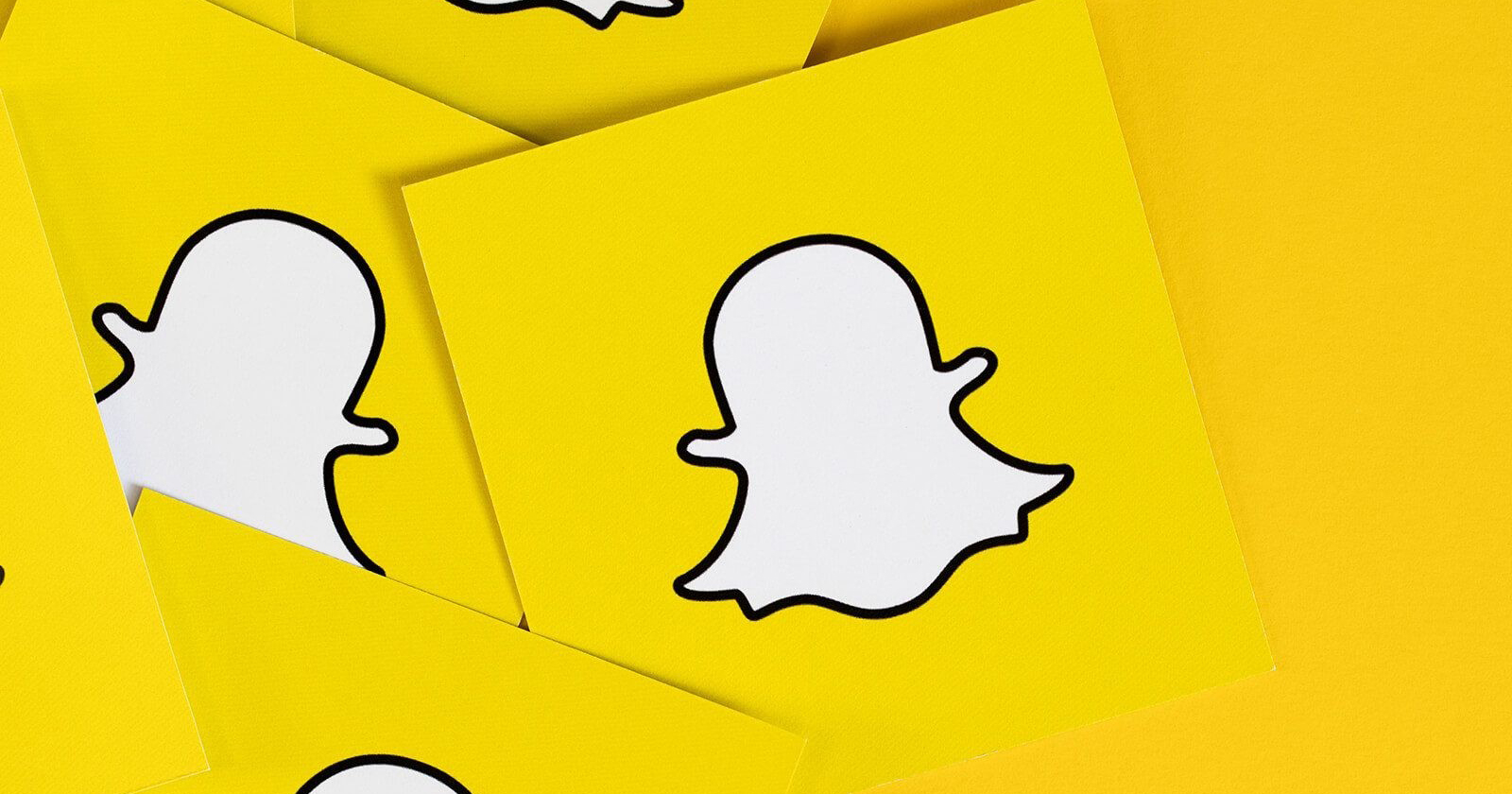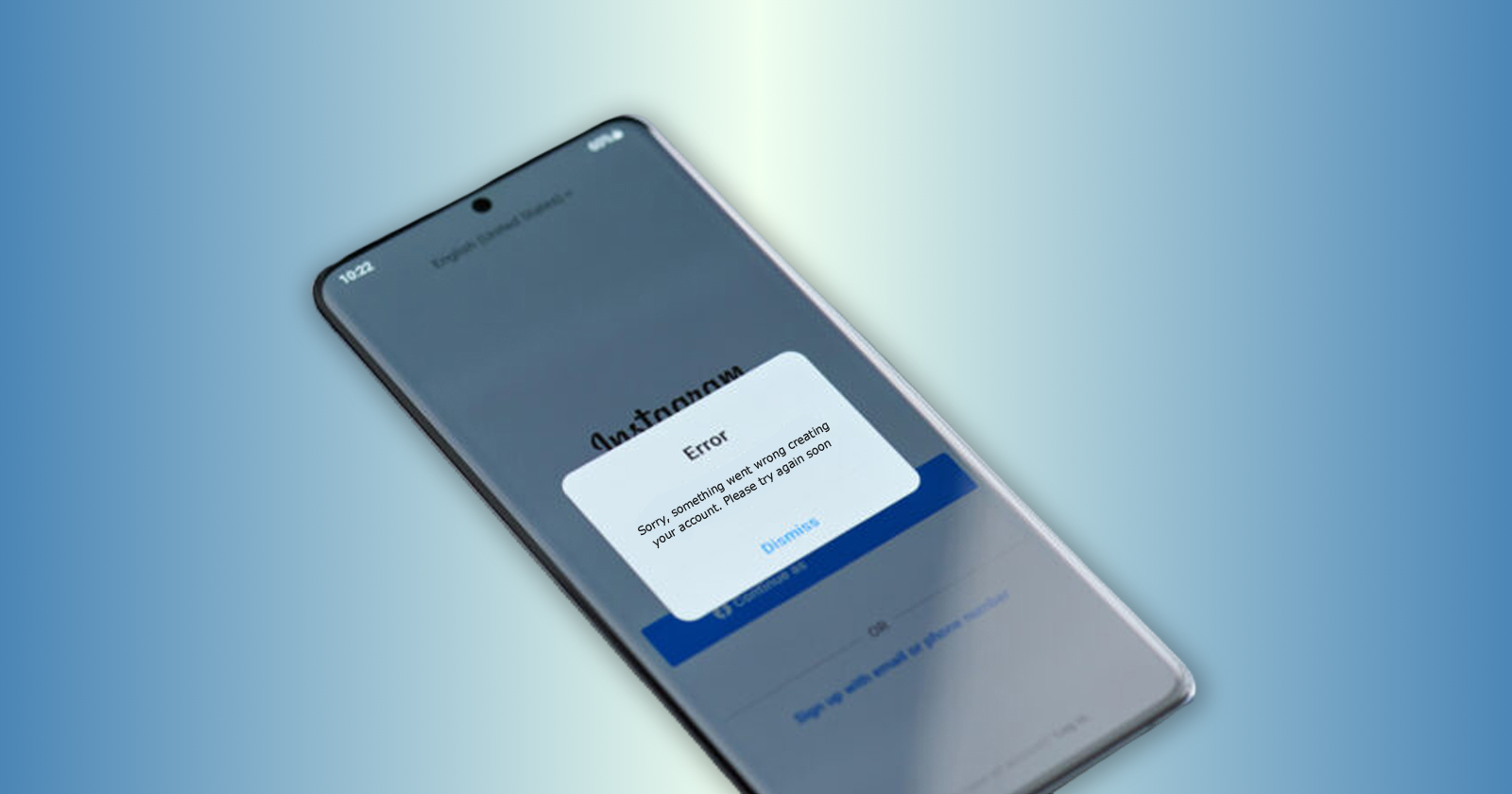Ensuring your social media posts look their best is crucial, whether it’s crafting a LinkedIn status, updating a Facebook page for your business, or tweeting some exciting news. In the digital age, this often means incorporating videos or images into your posts.
To enhance your posts, it’s important to upload visual content, ensuring it’s not only high-quality but also appropriately sized for the platform you’re using. However, resizing images for different platforms can be challenging, particularly if you’re encountering design constraints.
Preferences for image orientation vary, including horizontal, vertical, and square. To assist you, we’ve put together a list of optimal social media image dimensions for platforms, focusing on the most popular ones in 2025.
Why Do Social Media Platforms Have Specific Size Requirements?
Social media platforms have particular size requirements to enhance user experience and maintain a consistent visual layout. Each platform’s interface is designed to accommodate specific image sizes, ensuring uniformity and aesthetic appeal.
Consistent image sizing provides a smoother scrolling experience, preventing layout and presentation issues. These size guidelines also support responsive design, enabling images to adapt effectively across diverse devices, from smartphones to desktop computers.
Technically, standardized image sizes facilitate efficient data loading and faster page rendering, which is crucial in an era where users expect rapid interactions. Adhering to these size requirements also aids algorithms that dictate content display and prioritization.
In essence, these guidelines aim to foster a user-friendly and visually appealing environment, while enhancing performance and ensuring a uniform visual experience for a wide-ranging user base.
Social media marketing companies expertly utilize optimal image dimensions for each platform, ensuring their clients’ visual content is displayed effectively and engagingly to maximize audience impact.
Benefits of Following Social Media Image Dimensions Guidelines
Using optimal image sizes ensures your images appear crisp, attractive, and professional on various devices and screen resolutions. Consistent image sizing boosts brand recognition, leading to a unified and impactful online presence.
Moreover, aligning with platform-specific guidelines positively affects visibility and user experience. Social media algorithms tend to favor well-optimized content, and images that conform to recommended dimensions display correctly, avoiding issues like unwanted cropping or distortion.
This adherence increases your chances of capturing audience attention and fostering greater engagement. Properly sized images also contribute to faster loading times. Users are more inclined to engage with content that loads quickly, and suitably sized images are key to this efficiency.
Understanding and applying the image size guidelines for each social media platform is vital for crafting a professional, visually appealing, and impactful online presence. This approach not only demonstrates a commitment to quality but also maximizes the effectiveness of your visual storytelling, creating stronger connections with your audience in the competitive digital landscape.
Also Read: Top 20 Advantages and Disadvantages of Social Media
Size Guidelines for Social Media Platforms
Facebook
As the largest and most popular social network globally, it’s essential to test how your Facebook posts will look in users’ feeds before publishing. Ensuring that your images are clear and correctly sized for the feed is key.
For images, JPG is the fastest to load, but if your photo includes text or icons, PNG is preferable. On mobile devices, cover photos will be displayed at 640 x 360 pixels. Facebook automatically resizes images that are too large or too small for ads.
For personal accounts, using your own photos is fine. For business accounts, upload a 1:1 square photo, ideally representing your business, like a logo. However, be cautious with text-heavy logos as Facebook limits text to less than 20% of the image. Business pages now feature a profile image at the top left, distinguishing them from personal accounts. Here are the image size guidelines for Facebook:
- Profile: 180 x 180
- Cover: 820 x 312
- Timeline: 1200 x 900
- Ads: 1200 x 628
X (Formerly Twitter)
Although surpassed by Instagram and TikTok in users and downloads, Twitter still boasts 400 million active users worldwide. An appropriately sized profile photo and header are crucial for your Twitter page.
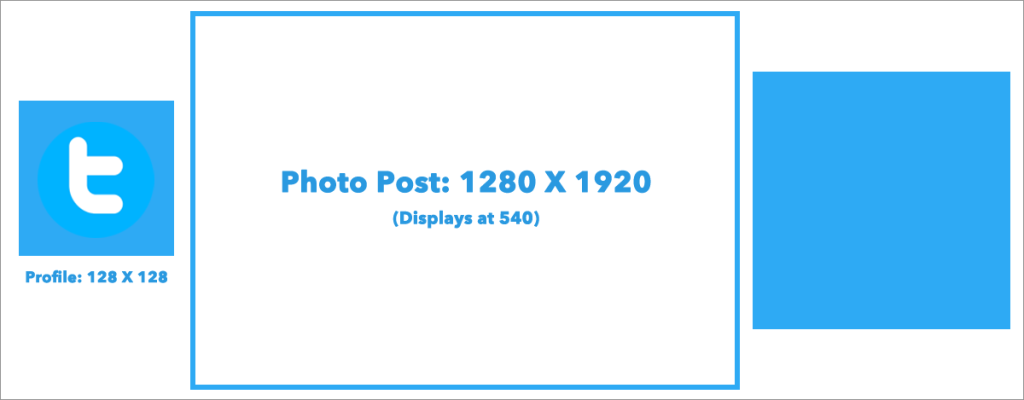
The profile photo is vital as it appears next to every tweet you post. The Twitter header photo, occupying the top part of your profile page, is where you can express your uniqueness. It requires a larger file size due to its prominence over the profile picture.
Standard photos are used in tweets and retweets. Adding images to tweets doesn’t consume character limits, thanks to Twitter’s recent updates.
Twitter clients display feeds differently based on widgets and user settings, meaning photo sizes can vary. To ensure visibility, center your content vertically. When sharing links, Twitter cards can display images, which are generally smaller than standard images unless settings are modified. Below are the image size guidelines for Twitter:
- Profile: 400 x 400
- Header: 1500 x 500
- Standard: 600 x 335
Instagram
Instagram is swiftly becoming the favorite social network of the contemporary generation, gaining particular popularity in niches like fashion, beauty, interior design, and other design-related fields. Instagram’s usability can be more challenging compared to more established platforms such as Twitter and Facebook.
Instagram Stories are immensely popular and are predominantly vertical. During their 24-hour lifespan, you can add more video clips and images to your story. While most users upload new content to their Stories, it’s also possible to use content you’ve already posted. The image size guidelines for Instagram are as follows:
- Profile: 320 x 320
- Standard: 1080 x 1080
- Thumbnail: 161 x 161
- Stories: 1080 x 1920
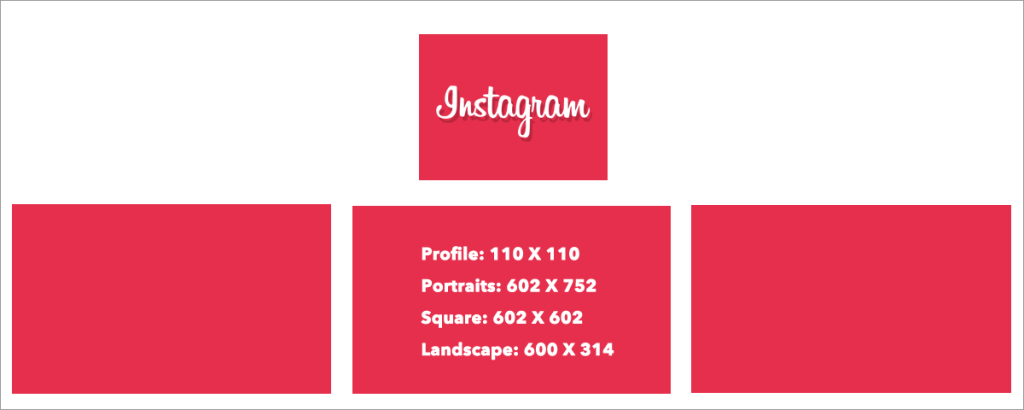
Due to Instagram’s unique restrictions, many social media management platforms have only recently begun supporting it. Instagram allows the upload of both images and videos, and these can be combined over a 24-hour period to create Instagram Stories.
Your Instagram profile picture serves as your personal or business icon. It should be your best photo that distinctly represents you or your brand, particularly for business profiles.
On your profile page, visitors will see rows of thumbnails of your content, which can be clicked to view larger versions of your images or videos. Regardless of your original image or video size, these thumbnails will always be square.
Pinterest
Pinterest is renowned as a leading referral link social media platform, attracting a global audience and serving as a prime spot for brands to share content and drive traffic to their websites.
Pinterest recommends a 2:3 aspect ratio for a professional look. Pinterest boards are central to the platform, allowing users to express their dreams and ideas. The image size guidelines for Pinterest are:
- Profile: 165 x 165
- Small Thumbnail: 55 x 55
- Large Thumbnail: 222 x 150
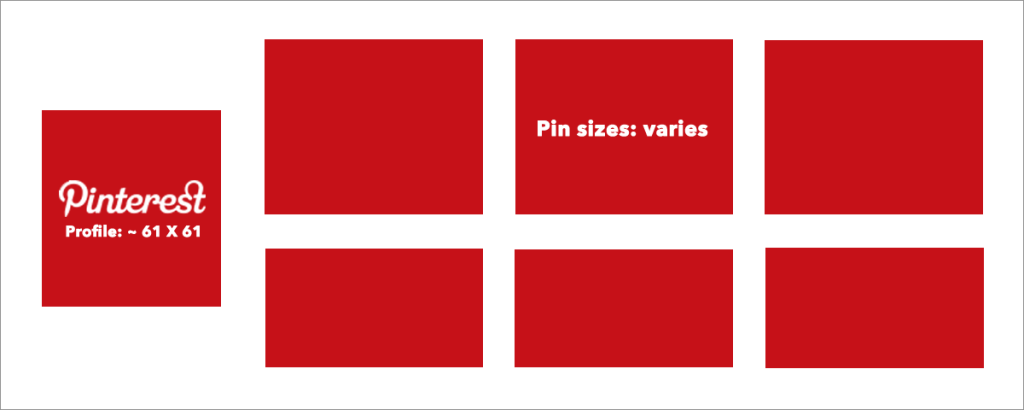
To make the most of Pinterest, use impactful images with these recommended sizes. Profile photos on Pinterest must be square, measuring 165 x 165 pixels. This image is displayed on your home page when you pin content, and on subsequent pages.
On your home page, the profile image appears as a 165 x 165 pixel graphic. Elsewhere on Pinterest, your profile photo is shown as a 32 x 32 pixel image.
Pins on Pinterest are unique. While there’s no limit on the length of your Pin images and boards are designed to showcase a collection of Pins, the maximum image width is 600 pixels. This makes Pinterest ideal for sharing infographics and other long-form images. On your main page and boards, all Pins are displayed as scaled 236px graphics for consistent presentation across the platform.
YouTube
Since YouTube is accessible across various devices like Chromecast, laptops, smartphones, PCs, and tablets, adhering to recommended photo sizes is crucial to prevent your images from appearing pixelated or distorted. The image size guidelines for YouTube are as follows:
- Channel Profile: 800 x 800
- Channel Cover: 2048 x 1152

Video content is a massive industry, and YouTube is almost indispensable for distributing video content. The platform, searched by over 2 million people monthly, offers a significant opportunity to showcase your content to a global audience.
Beyond simply uploading videos, engagement is key to competing for clicks on YouTube. This involves crafting catchy titles and appealing thumbnails. As you gear up to make your mark on the platform, be aware of the essential image sizes.
Uploading a channel profile picture on YouTube is straightforward. You can create a border around your profile picture, but ensure that the image fits properly. Your channel cover photo is your first impression; many YouTubers use taglines, large hero images, or montages related to their vlog’s theme.
Also Read: 20+ Social Media Trends To Follow in 2025
LinkedIn
The company cover photo spans the full width of the page and is thinner than a personal profile photo. It’s vital to have a logo that distinctly represents your business. The image size guidelines for LinkedIn are:
- Profile: 400 x 400
- Background: 1584 x 396
- Company Cover: 1536 x 768
- Company Logo: 300 x 30
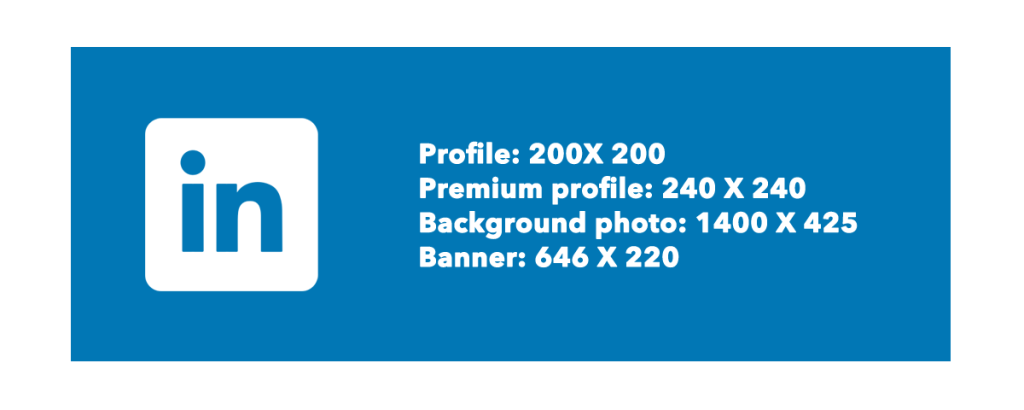
Although LinkedIn isn’t as visually driven as Instagram or Pinterest, high-quality images are essential, especially for B2B companies. As a professional network, LinkedIn’s content typically steers away from casual photos like pranks or memes.
LinkedIn also acts as a global resume platform, making profile photos vitally important. Profile photos are circular, so it’s crucial to center the most important part of the image. For businesses, the company logo is equivalent to an individual’s profile picture.
Businesses need to upload two versions of their logo. The larger one appears in the “Companies you want to follow” section and your company profile header. The smaller logo is used for branding in search results.
Tumblr
Diversity is key on Tumblr, and even though your theme might lean towards text, images are equally important here as on any other social media platform. Your profile photo, although not as prominently featured as your profile name, still plays a crucial role in branding.
Following the recommended sizes on Tumblr ensures your content looks appealing onscreen. Note that the maximum size for images in posts is 10 MB. The image size guidelines for Tumblr are:
- Cover: 3000 x 1055
- Profile: 128 x 128
- GIFs: 540
- Dashboard: 1280 x 1920
Tumblr, with its 166 billion blog posts across 518 million blogs, may not be your first thought for a social media campaign, but it remains a viable option. Its uniqueness lies in its flexibility, allowing users to customize their color palette and incorporate images. On Tumblr, you can upload three types of images: profile pictures, cover photos, and post images. Your profile picture appears alongside all your posts and comments.
Snapchat
Snapchat has revolutionized social media storytelling with its unique filters. With over 397 million daily active users, it’s more than just ephemeral snapshots. Images, whether they are ads, geofilters, or profile icons, are vital for user engagement and building brand presence.
As the pioneer of the popular Story format, now widely used across major social networks, Snapchat has a predominantly young audience, with over 61% of its users aged between 18 and 34. Utilize Snapchat Insights to gauge the performance of your content and optimize your strategy accordingly. Here are the image size guidelines for Snapchat:
- Profile: 320×320
- Geofilter: 1080×1920
- Ads: 1080×1920
Correctly sized images on Snapchat ensure your visual content looks sharp and conveys your message effectively without being improperly cropped or distorted. This platform enables users and brands to tell stories through fun filters and engaging content that vanishes after 24 hours.
Wrapping Up
Eye-catching images are a key element in drawing attention on social media networks. Adhering to the optimal image sizes for each social media platform is crucial in creating content that is visually attractive and engaging. While it may seem tedious to comply with these image size guidelines, overlooking them can diminish the impact of your content.
Blurry or distorted images are likely to be swiftly scrolled past by users, regardless of the content’s quality. To ensure your hard work pays off, it’s important to use the right size and aspect ratio. We hope this guide will assist you in navigating the various image size guidelines for different social media platforms.
FAQs
What happens if the image size guidelines on a social media platform are not followed?
Ignoring image size guidelines can result in images being cropped, distorted, or appearing pixelated. This affects the visual quality and professionalism of your content, potentially diminishing its impact.
Why do social media platforms have specific size requirements?
Platforms optimize their user interfaces and algorithms for specific image sizes, aiming to provide a consistent and visually pleasing experience across various devices. Each platform establishes guidelines that best suit its environment.
Can I use the same image on all social media platforms without resizing it?
While it’s technically possible, it’s not recommended. Resizing images to fit each platform’s specific guidelines ensures that they are displayed optimally, maintaining quality and engagement across different channels.
Do image size guidelines affect the social reach of my content?
Yes, they can have a significant impact. Images that meet the recommended dimensions are more likely to be favored by social media algorithms. This leads to better visibility and a greater likelihood of your content appearing in user feeds, thereby enhancing its reach and accessibility.
